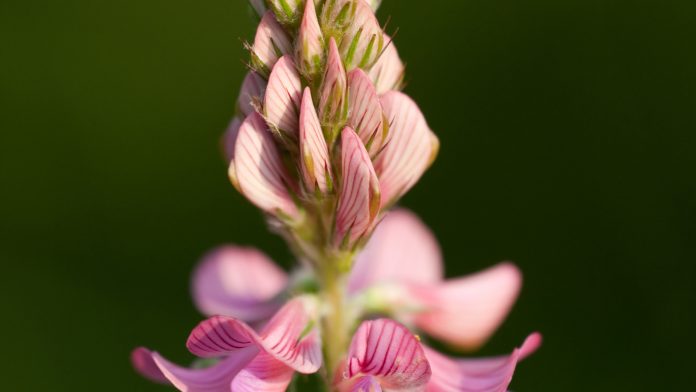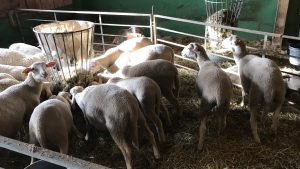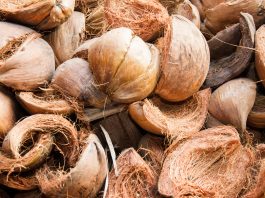Professor Frédéric Pichelin from the Institute for Materials and Wood Technology at Bern University of Applied Sciences explains why tannins from forest biomass represent a great alternative to sainfoin when it comes to dosing animal feed in order to reduce the parasite burden in livestock.
The global economy is moving towards a bio-based economy. This transition means that the historically developed structures and ways of life that appear normal today need to be completely rethought. This transition is even more necessary after seeing the big societal and economical damages resulting from the coronavirus diseases. These changes also apply to our relationship with the forest and wood materials. In the past, wood has mainly been used to produce paper, furniture, houses, and other wooden based materials. These markets are well-established, and many European countries are still seeing growth in these areas. However, even if these markets absorb a big part of the renewable biomass, a significant part of the feedstock remains unexploited.
In recent years, the BFH Institute for Materials and Wood Technology has developed a strong expertise in the field of wood biomass valorisation and has proven that wood and wood-based products have a huge potential across a range of sectors, from aerospace to musical instruments, furniture, and construction. Recently, a strong focus has been put on the chemical valorisation of wood biomass. Indeed, the article entitled ‘Healthy animals thanks to tannin from Swiss wood’ (Originally published in spirit biel/bienne, www.spirit.bfh.ch) presents the significant potential of tannin extraction in the field of farming.
Parasites in livestock are often treated using antiparasitics, which can lead to drug resistance. New ideas are required for the sake of the animals’ health. Researchers at Bern University of Applied Sciences BFH want to use herbal active ingredients from indigenous woods to reduce parasitic infections.
Gastrointestinal parasites, which settle in the stomach or intestinal tract, represent a major challenge in livestock farming. They are generally treated with antiparasitic agents, but this can lead to drug resistance. Researchers at Bern University of Applied Sciences BFH are pursuing an alternative strategy: they aim to reduce the burden of parasite in livestock using tannins – natural herbal active ingredients which are known for their antiparasitic and antibacterial effects. The long-term goal is to use tannin extracts from indigenous wood species (forest biomass) in animal feed to improve animal health and reduce both maintenance costs and the use of medicines.
Parasites are detrimental to animal welfare
Gastrointestinal parasites are widespread among various types of animal, including rabbits, small ruminants, piglets and calves. The infected animals are less productive (in terms of growth, milk production, etc.) and are more vulnerable to other illnesses because their immune systems are weaker. In some species, and especially with young animals, this can often result in the loss of the animal, which compromises the economic success of livestock farming. In most cases, parasites are treated using antiparasitic drugs. However, this encourages the development of drug resistance in the parasites, and the effectiveness of the antiparasitic agent is lost over time. That is why alternative strategies for controlling the parasite burden are vital in safeguarding animal health and economic success in the long term.
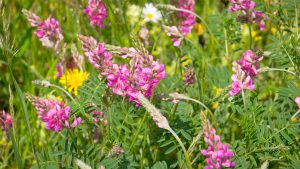
Fighting parasites with plants
It has already been proven that feeding animals plants that contain high concentrations of natural phenolic compounds (including tannins and phenolic monomers) reduces parasites. Common sainfoin (Onobrychis viicifolia Mill.), which is indigenous to the Alpine region, has produced notably strong results in this respect (Huang et al. 2017). The development of parasitic resistance to the herbal active ingredients in sainfoin has not yet been observed. Common sainfoin is an indigenous, annual plant that is found particularly in extensively farmed rough pastures, but is difficult to grow in monocultures.
Another approach is to supplement animal feed with plant extracts that are rich in phenolic ingredients. Adding tannins (polyphenolic herbal ingredients) to the feed of ruminants has already been observed to produce antimicrobial, anti-inflammatory, and antiviral effects, whilst also reduce the burden of parasite in livestock.
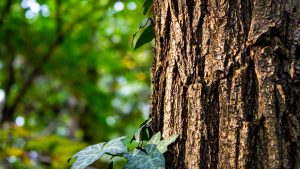
Active ingredients from wood and bark of indigenous trees
By conducting a detailed chemical analysis of the herbal ingredients in sainfoin, BFH researchers were able to confirm a high level of commonality with the ingredients of individual assortments of indigenous forest biomass (the bark and wood of various tree species). The bark of some indigenous trees, for example, contains ingredients whose molecular structure is very similar to that of sainfoin. Tannins based on procyanidin units in particular are highly similar. Phenolic monomers (e.g. catechin, camphor oil and quercetin), which work in synergy with the tannins to produce the bioactive effect, are also present in both sainfoin and forest biomass.
The benefit of adding wood-derived tannins to animal feed is that dosing is simple and the usual principal feed can be retained.
Researchers believe this strong chemical congruence offers a promising approach to overcoming the limitations associated with the cultivation of sainfoin and its use as an animal feed. Cultivating sainfoin has so far proved challenging as the plant is unable to compete with weeds. Furthermore, the concentration and composition of the harvested tannins can vary greatly depending on the weather, the time of the harvest, and the stage of development the plant is in. Relatively large quantities of sainfoin must be used in the feed to achieve an anti-parasitic effect, which is sometimes incompatible with the feed composition required for certain species.
In contrast, tannins are present in high concentrations in wood and bark tissues and in deciduous and coniferous trees and can be released using extraction processes. Tests on wood extracts from sweet chestnut trees and various tropical tree species have already shown that tannins can reduce the parasite burden in livestock. The benefit of adding wood-derived tannins to animal feed is that dosing is simple and the usual principal feed can be retained.
There is currently little information available on the effectiveness in animal feed of tannins from indigenous main tree species (e.g. tannin extracts from spruce, fir, larch, pine and beech bark). However, preliminary investigations by BFH have shown that the extracts may reduce the burden of parasite in livestock and strengthen the immune systems of animals.
The next step will therefore be to conduct feeding tests to investigate appropriate methods for introducing the extracts into the animals’ usual feed, as well as examining the influence of the extracts on the parasite burden in small ruminants such as sheep and goats. The long-term goal is for tannin extracts from indigenous forest biomass to be used in animal feed to improve animal health and production capacity while decreasing maintenance costs and the use of medicines.
Professor Dr Frédéric Pichelin
Head
Institute for Materials and Wood Technology IWH
Bern University of Applied Sciences BFH
+41 32 344 03 42
frederic.pichelin@bfh.ch
www.bfh.ch/institute-materials-wood-technology

